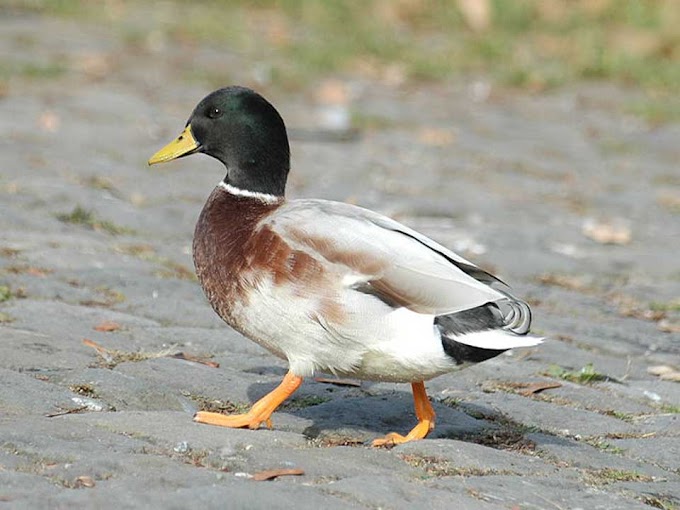The Cockatiel is a parrot that is the
member of “Cockatoo family” prevalent in Australia. Cockatiels are recognized
as domestic pets and companion parrots all over the world. They are comparatively
easy to breed. As a captive bird, Cockatiel is second to the Budgerigar in its reputation.
The Cockatiel is the one member of
species “Nymphicus”. It was formerly thought to be a crested parrot or small Cockatoo.
However, the latest research has assigned it to the subfamily “Nymphicinae”.
It is, therefore, now categorized as the tiniest of “Cacatuidae” (Cockatoo family).
Cockatiels are innate to Australia and they like Australian swamplands, wild-lands,
and bush-lands.
Length and Size
Contrary to most Cockatoos,
the Cockatiel has long tail-feathers evenly covering half of its whole length.
At the size of 30 to 33 cm (12 to 13 inches), Cockatiels are considered the
smallest of Cockatoos and usually larger at the size between 30 and 60 cm (12
and 23.5 inches).
Lifespan
The normal lifespan of Cockatiel
is expected between 16 to 25 years in captivity, however, often it is
considered between 10 to 15 years. However, there are some stories about Cockatiel’s
living for as long as 32 years. The lengthiest lifespan of Cockatiel reported as 36
years. The diet, exercise, and training are very important issues of Cockatiels.
Cockatiel Appearance
The Cockatiel's unique
erectile crest indicates the bird’s passionate nature. The crest is intensely upright
when the Cockatiel is alarmed or excited, moderately slanting in its balanced
or relaxed state, and compressed close to the head when the bird is annoyed or cautious.
The crest is also apparent smooth but juts outward in the back when Cockatiel seems
attractive or playful.
The ordinary grey or wild type
Cockatiel's fluff is mostly grey with protuberant white blazes on the external
edges of each wing. The male has a yellow or white face, whereas, the female is mostly
grey or light-grey. Both male and female have a rotund orange area on both ears, frequently
mentioned as ‘cheddar cheeks’. This orange pattern is usually vibrant in adult
males, and frequently fairly muted in females. Visual sexing is frequently conceivable
with this variant of the bird.
The Cockatiels are comparatively
vocal birds. The calls of males are very dissimilar than females. Cockatiels can
be trained to sing particular tunes or songs and speak numerous words and sentences.
Cockatiel Distribution and Habitat
The Cockatiels are innate to
Australia, where they seem mostly in arid or semi-arid areas, but they always
like to remain closer to the water. Largely itinerant, the species will travel
to the places where food and water are adequately available. They are normally
seen as couples or in small groups. Occasionally, hundreds will flight over a
single body of water. To various farmers' dismay, they frequently eat
cultivated harvests. They have vanished from most productive south-west and
south-east regions of the country, the innermost western Australian deserts,
and the Cape York Peninsula. They are the single Cockatoo species which can occasionally
breed at the culmination of their first year.
Cockatiel Color Mutations
Presently, 22 Cockatiel’s
color mutations have been recognized worldwide in aviculture with 8 being selected
in Australia. Changes in captivity have occurred in different colors; some are fairly
dissimilar from those observed in nature. The wild Cockatiels are grey with noticeable
alterations between males and females. The male grey Cockatiels usually have
yellow heads whereas the females have grey heads. Adolescents tend to be the
same in appearance to the females with redder beaks. The multi-colored mutation
was first looked in California in 1949. This change is a blemish of color on an
else solid-colored parrot. For instance, this may look like a grey mark on yellow
Cockatiels.
Lutino coloring was first recognized
in 1958. These birds dearth the grey of their wild complements and are white to
soft-yellow. This is a prevalent color; due to inbreeding. These Cockatiels frequently
have a slight bare spot behind their crests. The cinnamon mutation, first understood
in the 1950s, is very related to the grey bird in appearance; however, these
birds have a deeper, darker complexion. Pearling was initially looked in 1967.
This is realized as a quill of one color with a dissimilar tinted edge, for
example, grey feathers with yellow tips. This unique design is on a bird's
wings or hindmost. Albino color alteration is a deficiency of color. These
birds are white with red-eyes. Fallow Cockatiels first seemed onetime in
the 1970s. This mutation displays as a bird with cinnamon complexion with
yellow segments.
Additional mutations comprise
emerald/olive, dominant and receding silver, as well as mutations, are observant in
Australia. These are Australian bare, paled, dilute/pastel silver, silver sequin,
platinum, covered and pewter. Supplementary changes, for instance, face varying
mutations comprise; white-face, pastel-face, foremost yellow-cheek, gold-cheek,
cream-face, and the Australian yellow-cheek.
Cockatiel color alterations
can become very difficult as one bird may have several color changes. For
instance, yellow lutino Cockatiels may have to pearl (white spots) on their wings
and back. This is a dual mutation. An example of multiple mutations would be
cinnamon Cockatiel with yellow face complexion with pearling and multicolored designs.
 |
| Cockatiel Parakeet (Nymphicus Hollandicus) |
















0 Comments